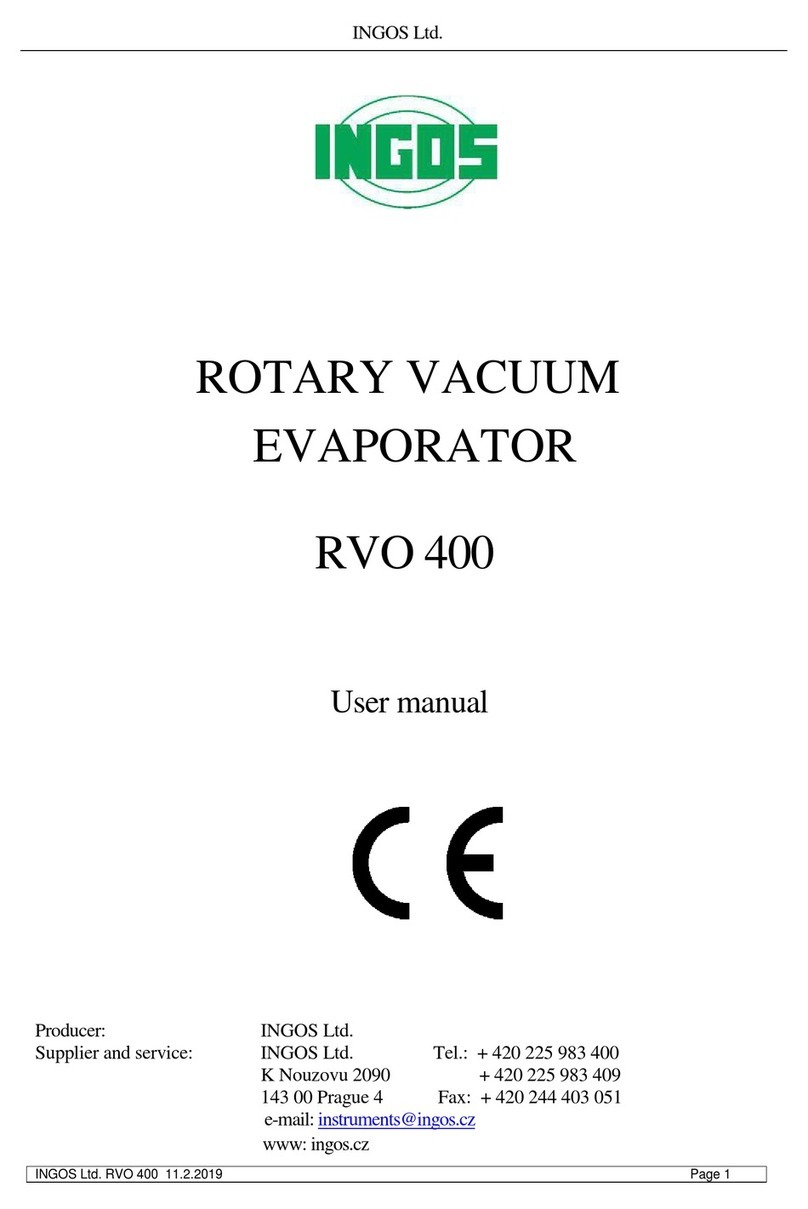
INGOS Ltd. Laboratory Instruments division Page 3
1. INTRODUCTION
Innovated
Rotary vacuum evaporator RVO 400 is new advanced model of the company INGOS
Ltd.. RVO 400 is first model fitted with system designed for the control and communication by PC
with the possibility to data entry of pre-set values and date processing while evaporating . Is noted for
affability value in-use and compact construction. Innovated design offer users comfort and safety
using the remote control and safety bath cover. Optional is possible to equip RVO 400 with the
regulation in accordance by steam temperature .
1.1 Apparatus use and specifications
Rotary vacuum evaporator RVO 400 is designed for low-pressure evaporation at the pre-set value
of the heating bath temperature and at the pre –defined constant mixing process of the solution to be
vaporised. The vapours exhausted condense in a vertical or diagonal cooler and are collected into a
flask.
The apparatus is fitted with a digital vacuum control and measuring system. Vacuum ratio
is driven by diaphragm vacuum pump control.
User comfort assure heating bath equipped with motorized lift and manually tilted rotary
casing head.
Rotation of the evaporating flask, height of the heating bath, steam temperature , the
vacuum ratio and length of evaporation can be digitally set and controlled using the
Keyboard or PC. All controlled values can be stored in memories.
Standard glass assembly can be adapt or enlarged on request.
1.2 Technical characteristics
Evaporating flasks ................................................. 20 – 4000 ml
Rotation speed ......................................................0, 10 up to 280 rpm
Heating bath capacity (without flasks) …………. max. 4000 ml
Bath temperature ..................................................max. 100°C for water filling
max. 180°C for oil filling
Regulation accuracy .............................................. ±1°C up to 100°C *
±3°C up to 180°C *
Pressure measurement…………………………… absolute
Pressure difference ................................................ adjustable 1-500 mbar
Power supply ........................................................ 230V, ±10%, 50Hz
Power input ..........................................................max.2000 W Power input
Dimensions (w x h x d) ........................................ 650 x 900 x 360 mm (including glass)
*
in resting state
1.3 Symbol Explanation
- hot surface























